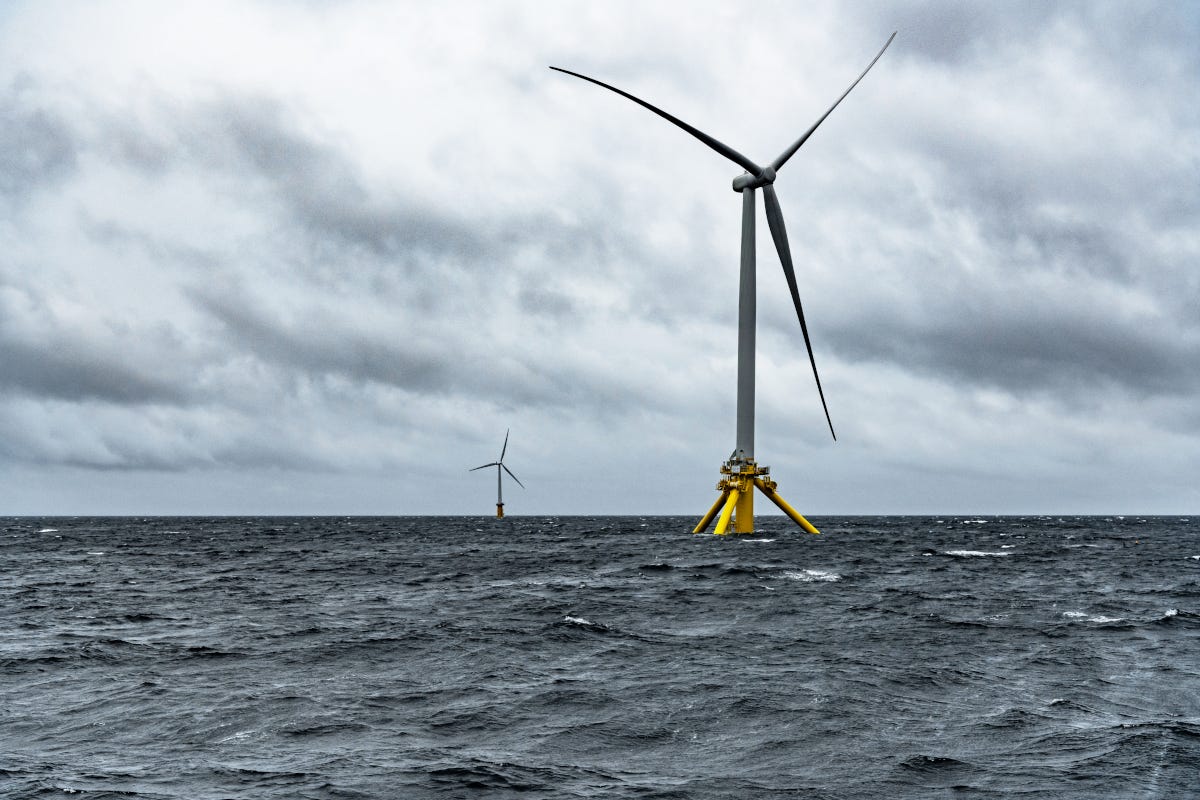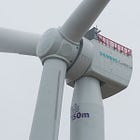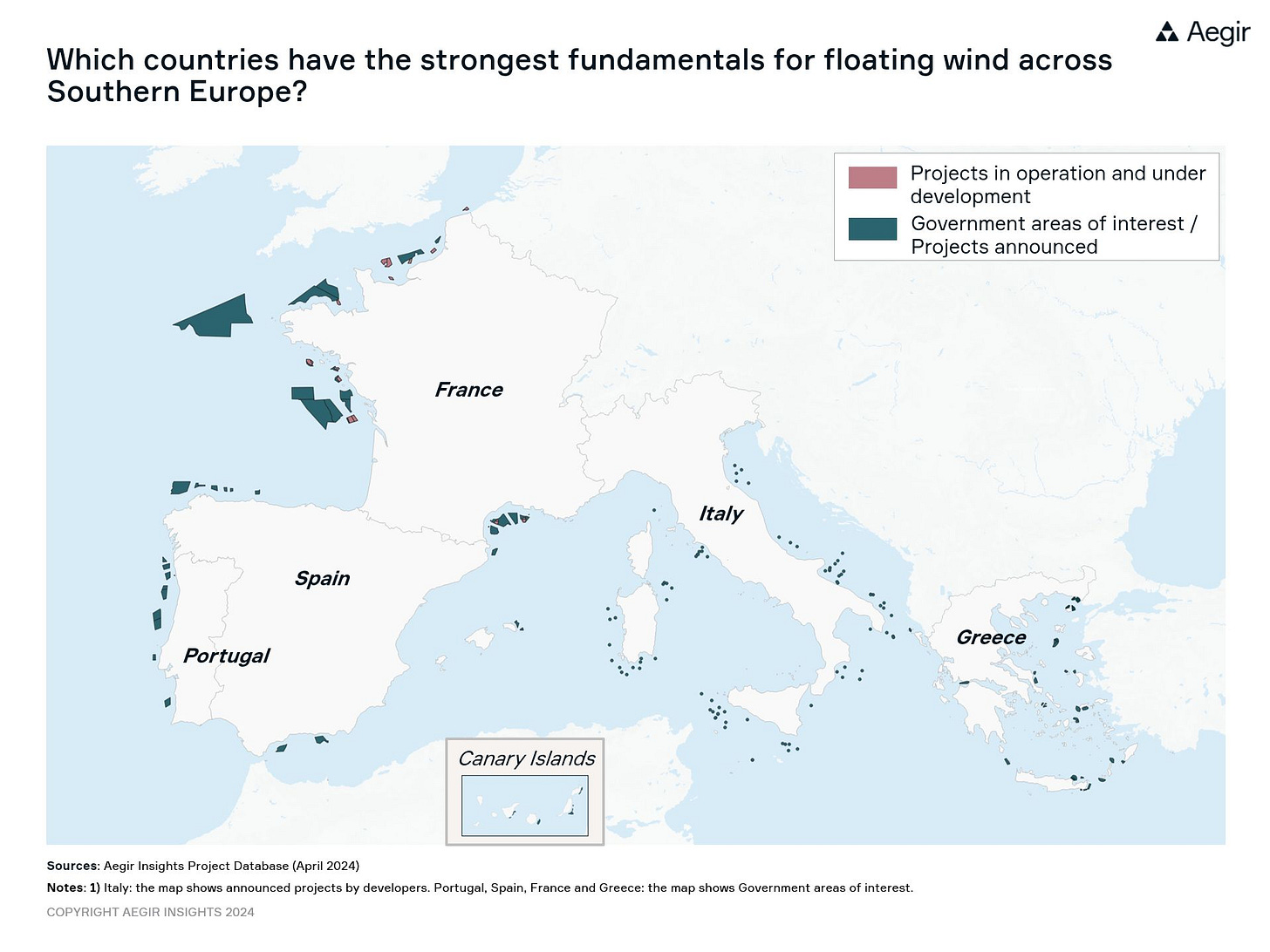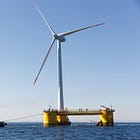Windletter #82 - The impressive numbers of the floating prototype TetraSpar
Also: Dongfang installs an 18 MW wind turbine with a 260-meter rotor, potential of floating wind power in southern Europe, large-scale self-consumption and more.
Hello everyone and welcome to a new issue of Windletter. I'm Sergio Fernández Munguía (@Sergio_FerMun) and here we discuss the latest news in the wind power sector from a different perspective. If you enjoy the newsletter and are not subscribed, you can do so here.
Windletter is sponsored by:
🔹 Tetrace. Specialized services in operation and maintenance, engineering, supervision, inspection, technical assistance, and distribution of spare parts in the wind sector. More information here.
🔹 RenerCycle. Development and commercialization of solutions and specialized services in the circular economy for renewable energies, including comprehensive dismantling of wind farms and waste management, refurbishment and sale of components and wind turbines, management and recycling of blades and others. More information here.
Windletter está disponible en español aquí
The most read from the latest edition has been: the video of the tornado passing through a wind farm, the article on how batteries are changing the electrical system in California, the blades of the Nordex N175 prototype.
That said, let's get to this week's news.
🌊 The impressive numbers of TetraSpar, the Stiesdal prototype
One of the most promising floating wind platform designs is Stiesdal's TetraSpar. And the truth is, looking at the numbers, it seems to be working very well.
Through its LinkedIn account, Stiesdal has shared some data from the approximately 2 and a half years that the prototype has been in operation since it was connected to the grid at the end of 2021. And they are spectacular.
37 GWh of energy generated with a 54% capacity factor.
An availability of 97.0% in 2022, 98.3% in 2023, and 99.5% so far in 2024. This is great news considering the reliability issues that have occurred in other floating projects.
The capacity factor so far in 2024 is 63%.
One of the great advantages of this TetraSpar design is that it can be manufactured in an industrialized manner (in a tower or monopile factory without too many adaptations) to be later assembled in port without the need for new welds or large deployments. That is, it does not require major investments in ports, unlike other more complex platform designs to manufacture.
Interestingly, despite the spectacular data, for some reason, Stiesdal has now focused on a semi-submersible design called TetraSub. According to a LinkedIn comment from Stiesdal itself, this new design would be more suitable for projects being developed in the short term. Although I have read elsewhere that Stiesdal might have some intellectual property conflict with TetraSpar (I do not know the details).
It would be a shame if this design were abandoned (even temporarily), because undoubtedly these good availability and reliability data would surely help the bankability of the projects.
The TetraSpar prototype is installed at METCentre, Norway, and is equipped with a 3.6 MW Siemens Gamesa wind turbine with Direct Drive technology. Since its commissioning, the prototype has been collecting data, validating numerical models, supporting research and development projects, and serving as a living laboratory for the development of floating wind technology.
The project owners are TEPCO, Shell, RWE, and Stiesdal Offshore itself.
_
🌬️ Dongfang installs an 18 MW wind turbine with a 260-meter rotor diameter
The Chinese state-owned company Dongfang Electric Corporation has installed an offshore wind turbine with 18 MW of power and a rotor diameter of 260 meters.
They announced this on their X account (formerly Twitter), also posting a video of the turbine assembly process.
The turbine, as is usual with offshore prototypes, has been installed onshore. In this case, in Shantou, Guangdong province, in southern China.
It is a turbine referred to as semi-direct drive. But the truth is that I'm not clear on what they mean by the semi-direct drive concept. I'm all ears if anyone knows what this type of drive-train consists of. Interestingly, Dongfang also presented a model of the same size and power a few months ago but with direct drive technology.
Unless there's a surprise, this turbine is currently in the top 3 of the largest in the world alongside Mingyang with their MyS E 18-260 and Goldwind with their GWH252-16 MW.
All this, of course, with Siemens Gamesa's 21 MW wind turbine that should be installed by the end of the year. And also with the permission of Mingyang's 20 MW unit that already has the nacelle and at least one blade manufactured.
_
🏗️ Vestas completes installation of the V236-15.0 MW at the Thyborøn port
As we mentioned in edition #75, Vestas was installing a single unit of the V236-15.0 MW at the Thyborøn port, the second of this model to be installed after the prototype in Østerild.
This is a very unique project, as the turbine has been financed by 2,800 local shareholders, who also hope to make it a tourist attraction. Doing a napkin calculation, it comes out to 7,000-10,000 euros per shareholder to have the turbine up and running.
Vestas has now announced on its LinkedIn account that the turbine has already generated its first kWh and has taken the opportunity to share a video of the assembly.
It's quite curious that these turbines, designed for offshore use, when installed onshore, require the use of two large cranes to hoist the components. The hoisting of the nacelle is particularly spectacular. You can also find some cool photos on LinkedIn.
The order, in addition to the wind turbine, includes a 20-year maintenance contract and an agreement whereby Vestas can use that turbine for tests and verifications. Vestas itself indicates on its website that this unit will assist in the final verification campaign before starting serial production and installation of the first offshore projects, which will arrive in 2025.
_
🗺️ The potential of floating wind in southern Europe
The folks at Aegir Insights always bring interesting maps and analytics about the offshore wind market. After the impressive results of the 250 MW French offshore wind auction, with a PPA of €86/MWh indexed, Aegir Insights wonders which will be the next markets and areas in southern Europe.
The following map shows the areas of interest, announced projects, those in development, and those in operation for floating wind in Portugal, Spain, France, Italy, and Greece.
According to their newsletter, this price given in France could be feasible under favorable conditions, although there are voices suggesting it could be reckless. They anticipate that even lower prices could be possible in other markets in southern Europe.
An interesting point they reveal is that the locations for floating wind with the lowest LCoE in southern Europe could be in France and Spain, but the highest electricity market prices are in Italy and Greece (and therefore, higher expected revenues).
_
☀️ One of the most ambitious industrial self-consumption projects in Europe
Through Kiko Maza, we receive news of a truly remarkable industrial self-consumption installation.
The Stellantis Zaragoza plant in Figueruelas, in collaboration with Prosolia Energy, is carrying out a hybrid self-consumption project with a capacity of 58.4 MW that combines wind and solar energy.
Considering that we are talking about a self-consumption installation, the project has some impressive figures:
26.7 MW of wind power with 4 Nordex 6.9 MW turbines
20.8 MW of photovoltaic capacity (with 8.3 MW currently in operation)
Seeing large self-consumption installations with photovoltaic solar energy is commonplace, but seeing installations that also include a wind farm is clearly a rare sight.
Other questions that arise (and are also raised in the LinkedIn comments section):
What grid code compliance must the plant have when connected to a private grid (behind the meter)?
How does exporting power to the grid work? Can the system export electricity to the grid, or is it self-consumption with zero injection?
¿What "master" controller have they installed to coordinate the operation of the solar and wind systems and what control philosophy does it follow?
Thank you very much for reading Windletter and many thanks to Tetrace and RenerCycle, our main sponsors, for making it possible. If you liked it:
Give it a ❤️
Share it on WhatsApp with this link
And if you feel like it, recommend Windletter to help me grow 🚀
See you next time!
Disclaimer: The opinions presented in Windletter are mine and do not necessarily reflect the views of my employer.









